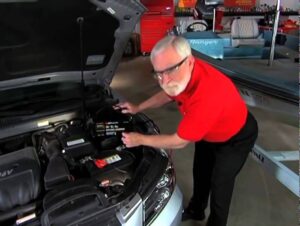Looking to fix a Ryobi battery? You’re in the right place! In this article, we’ll walk you through the steps to revive your Ryobi battery and get it working like new again. Whether your battery is not holding a charge or refusing to power up your Ryobi tools, we’ve got you covered. Don’t fret over expensive replacements or frustrating malfunctions – with our simple and effective solutions, you’ll be back to your DIY projects in no time. So, let’s dive in and discover how to fix a Ryobi battery in a few easy steps. Let’s get started, shall we?
How to Fix a Ryobi Battery: Comprehensive Guide
Introduction
Ryobi is a well-known brand in the power tools industry, offering a range of high-quality tools and equipment. One common issue that Ryobi users may encounter is a battery that fails to hold a charge or doesn’t work at all. But fret not! In this comprehensive guide, we will walk you through the steps to fix your Ryobi battery and get it back to optimal performance. Whether you’re a DIY enthusiast or a professional, these solutions will help you save money and extend the lifespan of your Ryobi battery.
Identifying Common Battery Issues
Before we dive into the solutions, let’s first understand the common issues that can affect Ryobi batteries. By identifying the problem accurately, you can choose the most suitable fix.
1. Battery not holding a charge
If your Ryobi battery loses its charge quickly or doesn’t hold a charge at all, there could be several reasons behind this issue. Some common causes include:
- Frequent charging without allowing the battery to fully discharge
- Exposure to extreme temperatures
- Age and wear of the battery
- Faulty cells
2. Battery not working
Another frustrating issue is when your Ryobi battery doesn’t work at all, even after charging. This can be caused by:
- Dirty or corroded battery contacts
- Defective charger
- Internal battery circuitry malfunction
Fixing a Ryobi Battery
Now that we’ve discussed the common battery issues let’s move on to the step-by-step solutions to fix your Ryobi battery.
1. Fully Drain and Recharge the Battery
Sometimes, a Ryobi battery may not hold a charge due to a memory effect. This occurs when the battery is repeatedly charged without being fully discharged. To fix this issue:
- Use your Ryobi tool until the battery is completely drained and the tool stops working.
- Remove the battery from the tool.
- Place the battery in the charger and allow it to charge fully. This process helps recalibrate the battery and restore its full capacity.
2. Clean the Battery Contacts
Dirty or corroded battery contacts can prevent the flow of power. To clean the contacts effectively:
- Remove the battery from the tool.
- Use a soft, dry cloth to wipe away any debris or dust on the battery contacts.
- If the contacts are corroded, dampen a cotton swab with vinegar or lemon juice and gently clean the contacts. Be careful not to let any liquid enter the battery housing.
- Dry the contacts thoroughly before reinserting the battery into the tool.
3. Check the Charger
A faulty charger can cause charging issues and result in a battery that doesn’t hold a charge. To check if your charger is the problem:
- Plug in the charger and ensure it is connected to a power source.
- Insert a compatible Ryobi battery into the charger.
- Observe the LED indicator on the charger. If it doesn’t light up or blinks irregularly, the charger may be defective.
- Try charging the battery with a different Ryobi charger to confirm if the issue lies with the charger or the battery.
4. Replace Faulty Cells
If you’ve tried the above steps and your Ryobi battery still doesn’t hold a charge, it’s possible that one or more cells within the battery pack have failed. To replace the faulty cells:
- Identify the failed cells by using a multimeter to test the voltage of each cell. Replace only the cells that display a significantly lower voltage than the others.
- Carefully remove the faulty cells from the battery pack using a soldering iron.
- Acquire replacement cells of the same type and capacity as the original cells. It’s important to match the specs to maintain the battery’s performance.
- Solder the new cells into the battery pack, ensuring proper polarity and connections.
- Reassemble the battery pack and test it to ensure it holds a charge.
By following the steps outlined in this guide, you’ll be well-equipped to fix common issues with your Ryobi battery. Remember to discharge and recharge the battery fully, clean the battery contacts, check the charger, and replace faulty cells if necessary. These solutions will not only save you money but also help you extend the lifespan of your Ryobi battery, allowing you to continue working with your favorite power tools.
Remember, it’s essential to prioritize safety while working with batteries. Always wear protective gear, work in a well-ventilated area, and follow the manufacturer’s instructions. With a little DIY know-how, you can revive your Ryobi battery and keep it running smoothly for years to come.
Frequently Asked Questions
Q: Why is my Ryobi battery not holding a charge?
A: There could be several reasons behind a Ryobi battery not holding a charge, including frequent partial charging, exposure to extreme temperatures, age and wear, or faulty cells. Try fully draining and recharging the battery, cleaning the contacts, or replacing faulty cells to resolve the issue.
Q: How can I clean the battery contacts?
A: To clean the battery contacts, remove the battery from the tool and use a soft, dry cloth to wipe away any debris or dust. If the contacts are corroded, dampen a cotton swab with vinegar or lemon juice and gently clean the contacts. Ensure the contacts are dry before reinserting the battery.
Q: Can I use a different charger for my Ryobi battery?
A: It’s recommended to use the designated charger for your Ryobi battery. Different chargers may have varying voltage and charging profiles, potentially leading to improper charging or damage to the battery. Always refer to the manufacturer’s instructions for compatibility and safety purposes.
Frequently Asked Questions
How can I fix a Ryobi battery that is not holding a charge?
If your Ryobi battery is no longer holding a charge, there are a few steps you can take to try and fix it:
What should I do if my Ryobi battery is not charging at all?
If your Ryobi battery is not charging at all, there are a few troubleshooting steps you can try:
Why is my Ryobi battery not fitting properly into the charger?
If your Ryobi battery is not fitting properly into the charger, you can try the following:
What should I do if my Ryobi battery is overheating during charging?
If your Ryobi battery is overheating during charging, it is important to address the issue promptly. Here are a few steps you can take:
How can I revive an old Ryobi battery?
If you have an old Ryobi battery that no longer holds a charge, you may be able to revive it by following these steps:
Final Thoughts
Fixing a Ryobi battery is a simple task that can save you money and extend the lifespan of your power tools. To fix a Ryobi battery, start by checking for loose connections or corrosion on the terminals. If necessary, clean the terminals with a mixture of baking soda and water. Next, try resetting the battery by disconnecting it from the tool and holding down the power button for 15 seconds. If this doesn’t work, you can try reconditioning the battery by fully discharging it and then charging it back up to full capacity. If all else fails, you may need to replace the battery cells or seek professional help. So, if you’re wondering how to fix a Ryobi battery, follow these steps and enjoy a fully functional power tool once again.



